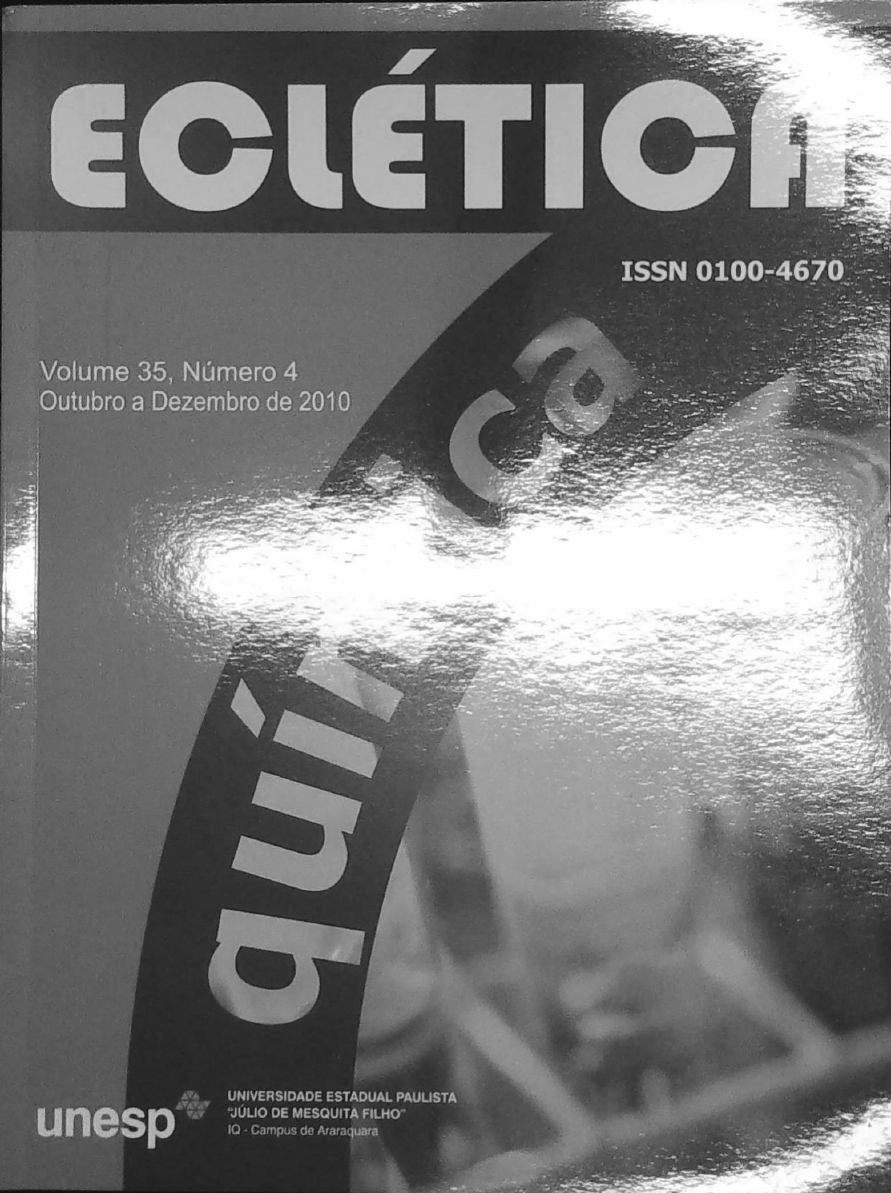Abstract
In this study the BEST7 software was employed to quantify different classes of functional groups and to model the proton titration behavior of humic substances. To illustrate the process, the Suwannee River fulvic acid of the IHSS (International Humic Substances Society) was used. Five categories – two classes of phenolic groups (phenol and cathecol), two classes of carboxylic groups (benzoic and phtalic) and the combination between them (salicylic) - of oxygenated groups were considered as being responsible for the potentiometric behavior of the sample and were quantitatively determined. The most and the least abundant groups were cathecol (3.300 0.010 mmol g-1) and phenol (1.225 0.070 mmol g-1), respectively. The estimated equilibrium constants were also determined and were in good agreement with the literature values for phenol and cathecol groups and for benzoic, phtalic and salicylic acids. Distribution diagrams of the species were generated with the software SPE and SPEPLOT.References
D. L. Sparks, Geoderma 100 (2001) 303.
G. de la Rosa, J. R. Peralta-Videa, J. L. Gardea-Torresdey, J. Hazard. Mater. 97 (2003) 207.
R. A. Alvarez-Puebla, C. Valenzuela-Calahorro, J. J. Garrido, Sci. Total Environ. 358 (2006) 243.[4] I. Kögel-Knauber, Org. Geochem. 31 (2000) 609.
J. A. González-Pérez, F. J. González-Vila, G. Almendros, M. C. Zancada, O. Polvillo, F. Martín, J. Anal. Appl. Pyrolysis 68-69 (2003) 287.
P. Faure, L. Schlepp, L. Mansuy-Huault, M. Elie, E. Jardé, M. Pelletier, J. Anal. Appl. Pyrolysis 75 (2006) 1.
A. Piccolo, S. Nardi, G. Concheri, Chemosphere 33 (1996) 595.
A. Cozzolino, P. Conte, A. Piccolo, Soil Biol. Biochem. 33 (2001) 563.
J. R. Lead, K. J. Wilkinson, E. Balnois, B. J. Cutak, C. K. Larive, S. Assemi, R. Beckett, Environ. Sci. Technol. 34
(2000) 3508.[10] C. S. Ragle, R. R. Engebretson, R. Von Wandruszka, Soil Sci. 162 (1997) 106.[11] M. M. D Sierra, T. G. Rauen, L. Tormen, N. A. Debacher, E. J. Soriano-Sierra, Water Res. 39 (2005) 3811.
N. Calace, N. Cardellicchio, B. M. Petronio, M. Pietrantonio, M. Pietroletti, Mar. Environ. Res. 61 (2006) 40.
M. M. D. Sierra, K. Arend, A. N. Fernandes, M. Giovanela, B. Szpoganicz, Anal. Chim. Acta 445 (2001) 89.
A. N. Fernandes, M. Giovanela, E. J. Soriano-Sierra, M. M. D. Sierra, J. Coast. Res. 39 (2006) 1062.
A. N. Fernandes, C. Giacomelli, M. Giovanela, D. O. Vaz, B. Szpoganicz, M. M. D. Sierra, J. Braz. Chem. Soc. 20 (2009) 1715.
A. H. J Gillam, P. Riley, Anal. Chim. Acta 1982 (141) 287.
A. E Martell, R. J. Motekaitis, VCH Publishers: New York, 1992.
G. Gran, Analyst 77 (1952) 661.
M. Schnitzer, U. C. Gupta, Soil Scie. Soc. Am. 29 (1965) 274.
M. M. D. Sierra, A. N. Fernandes, B. Szpoganicz, Talanta 62 (2004) 687.[21] A. E. Martell, R. M. Smith, R. J. Motekaitis, US Department of Commerce: Gaithesburg, 2004.[22] S. H. Sutheimer, M. J. Ferraco, S. E. Cabaniss, Anal. Chim. Acta 304 (1995) 187.
J. A. Leenheer, R. L. Wershaw, M. M. Reddy, Environ. Sci. Technol. 29 (1995) 393.

This work is licensed under a Creative Commons Attribution 4.0 International License.
Copyright (c) 2018 Eclética Química Journal









